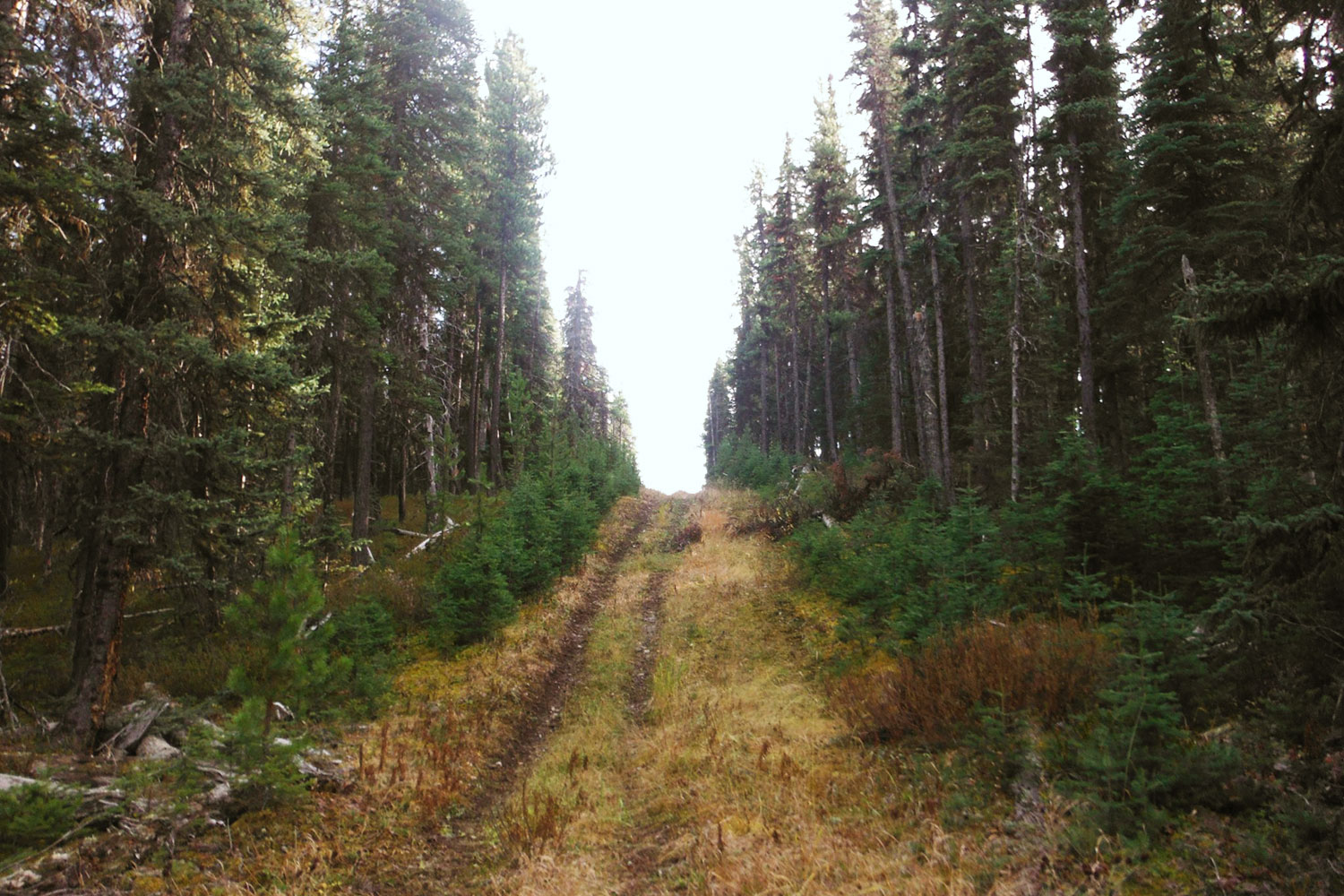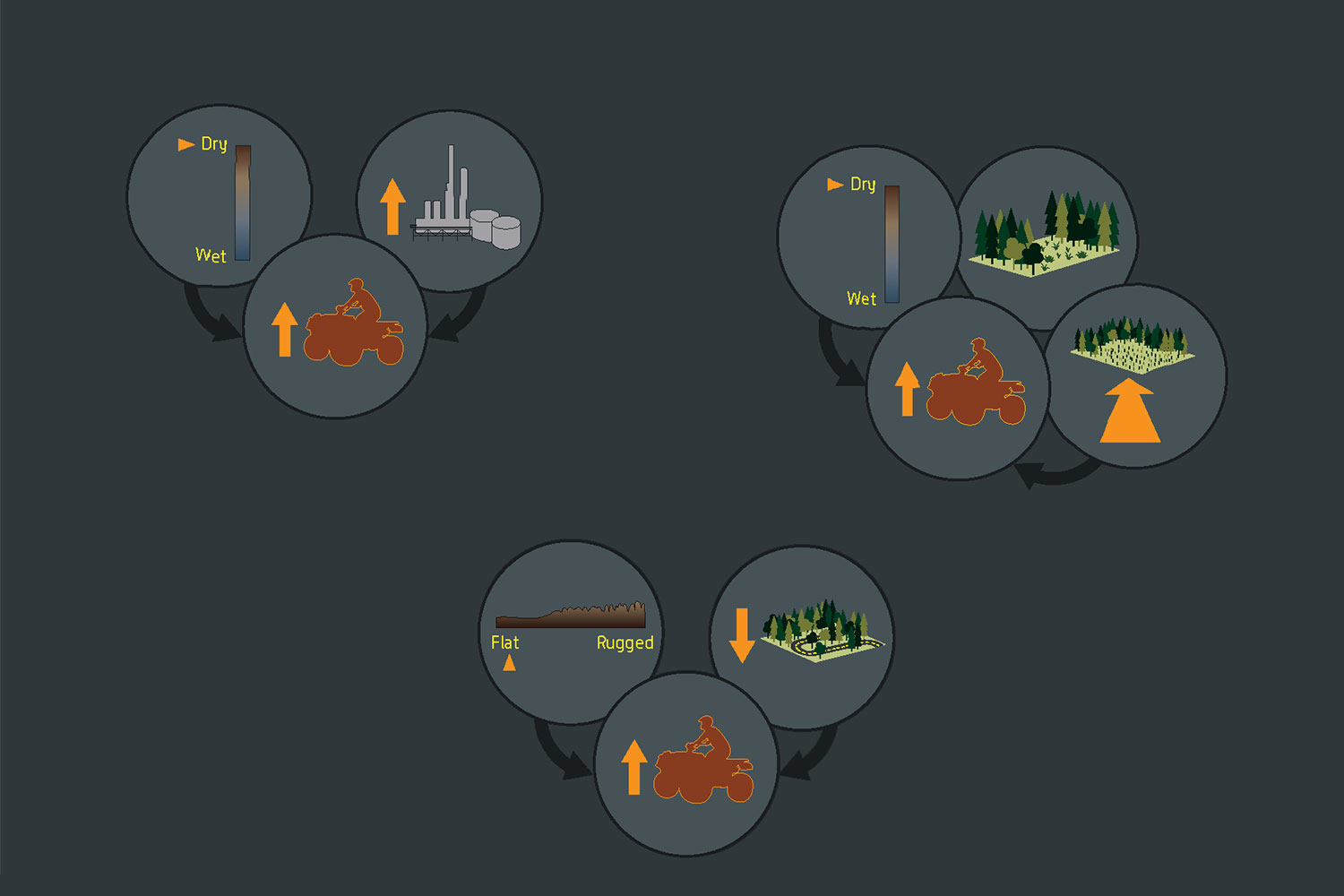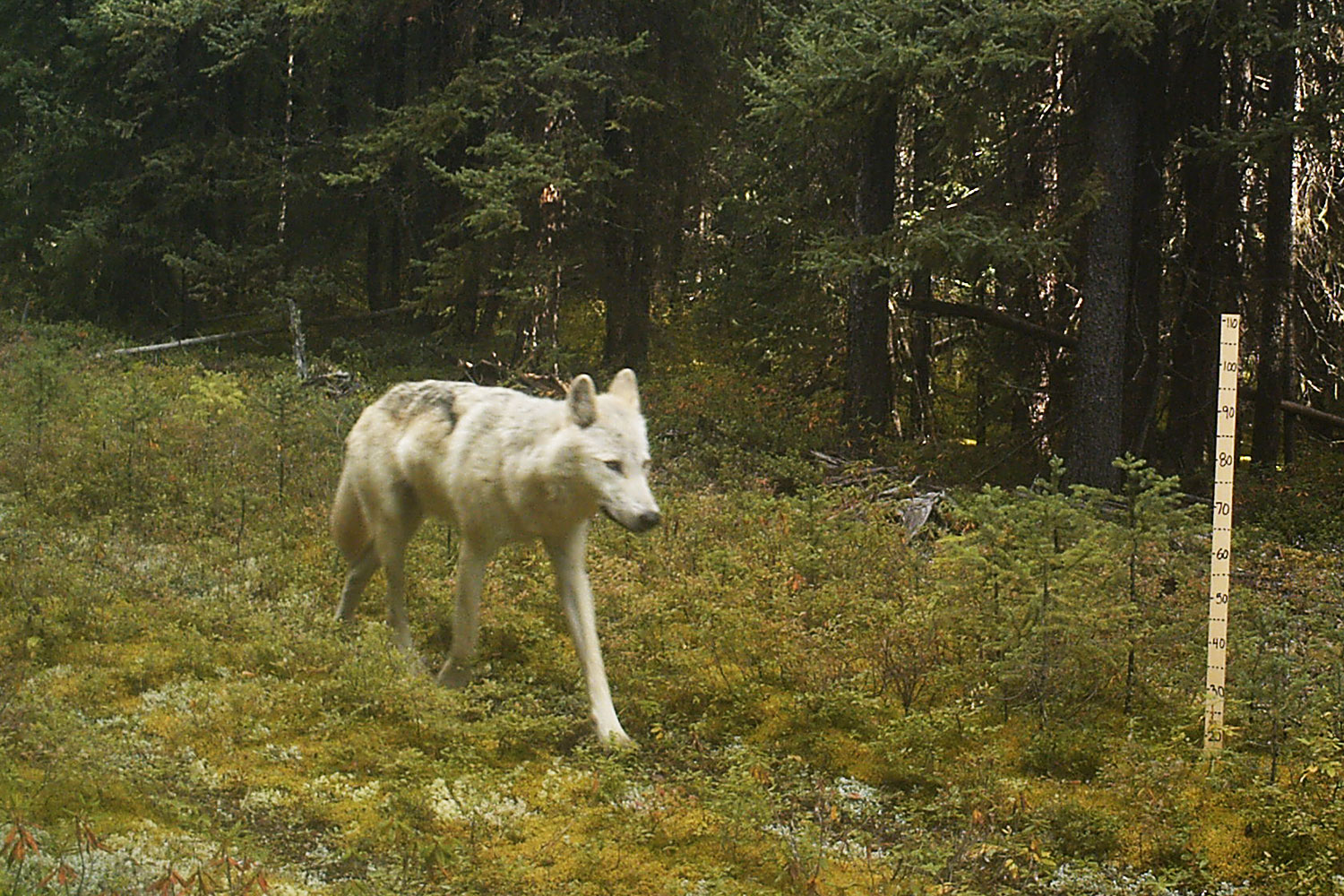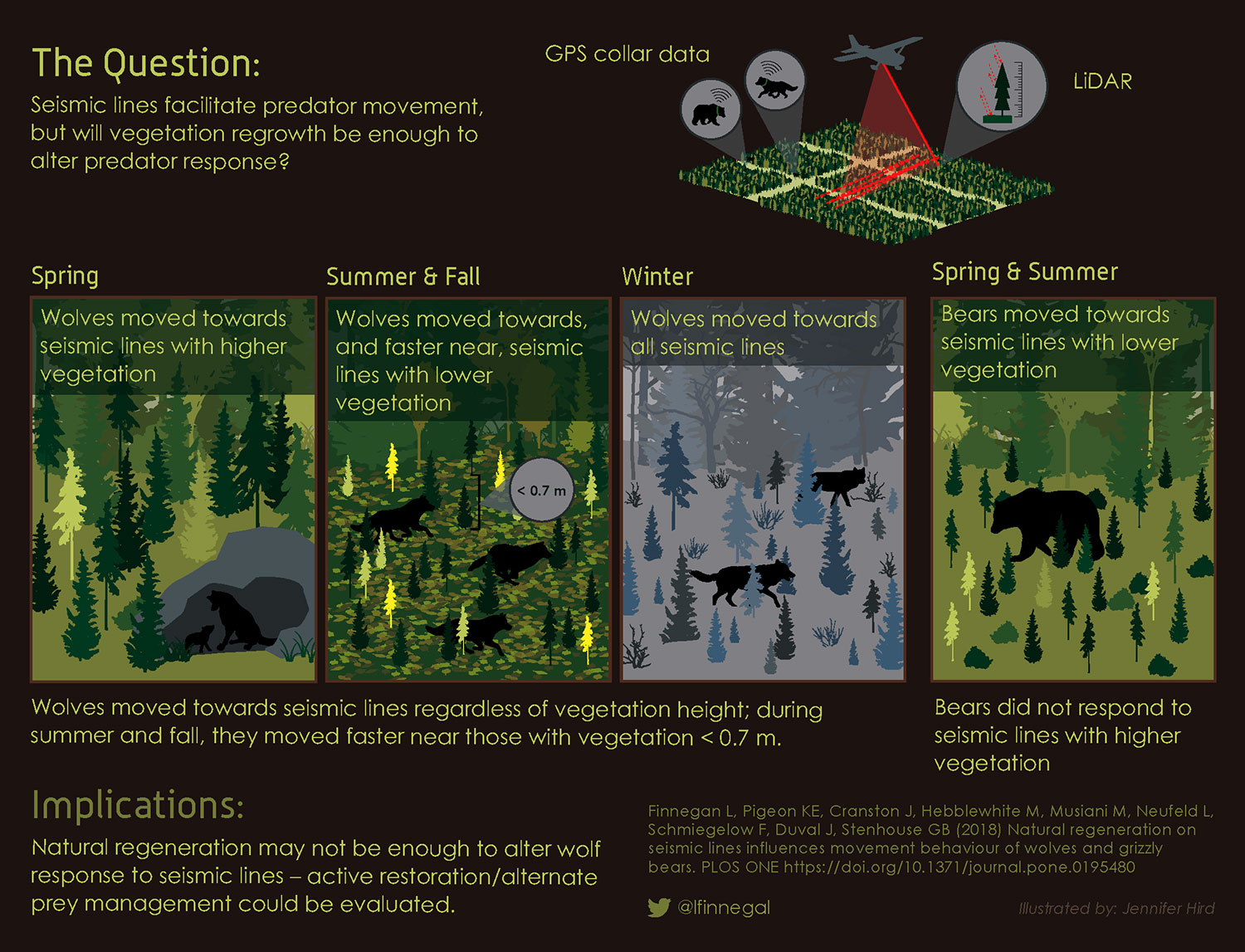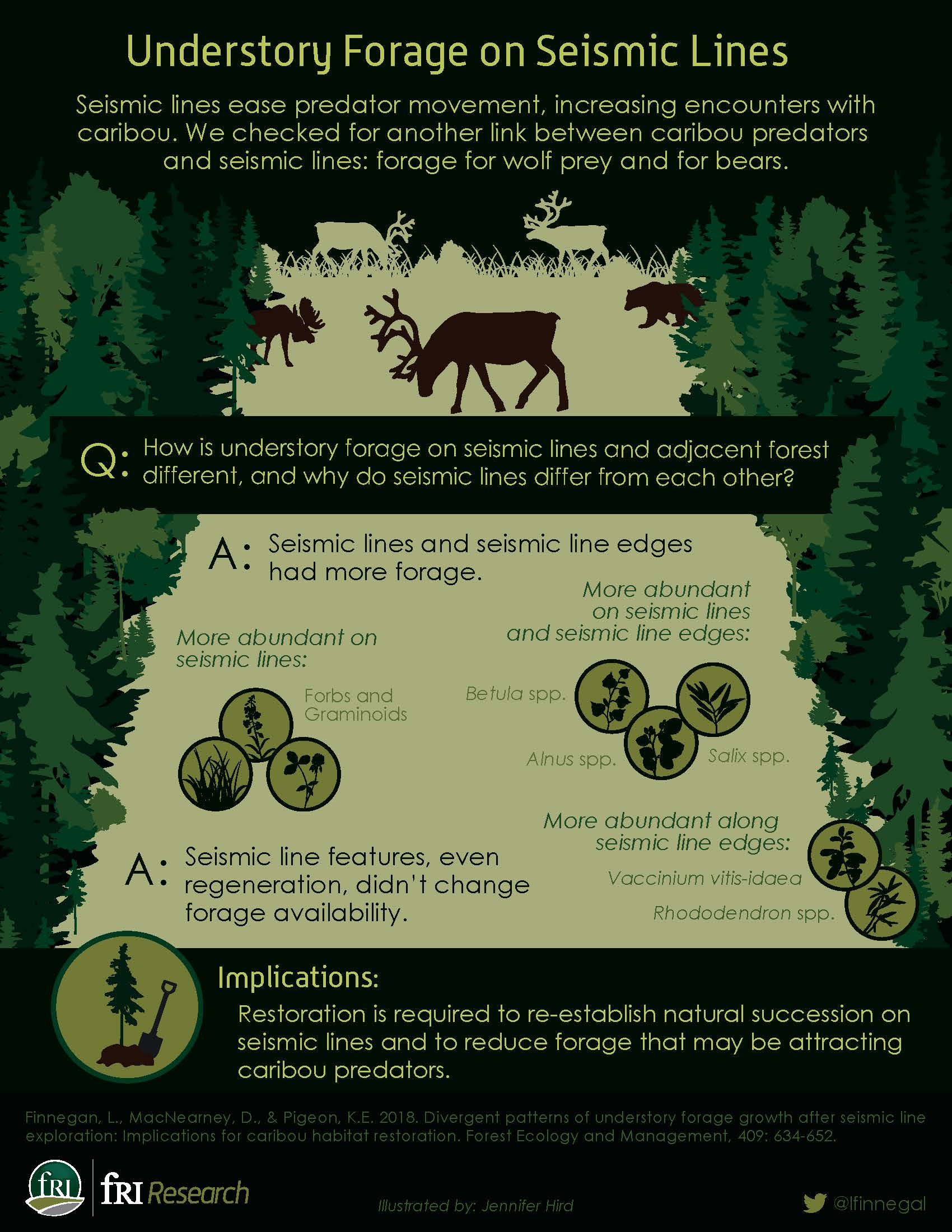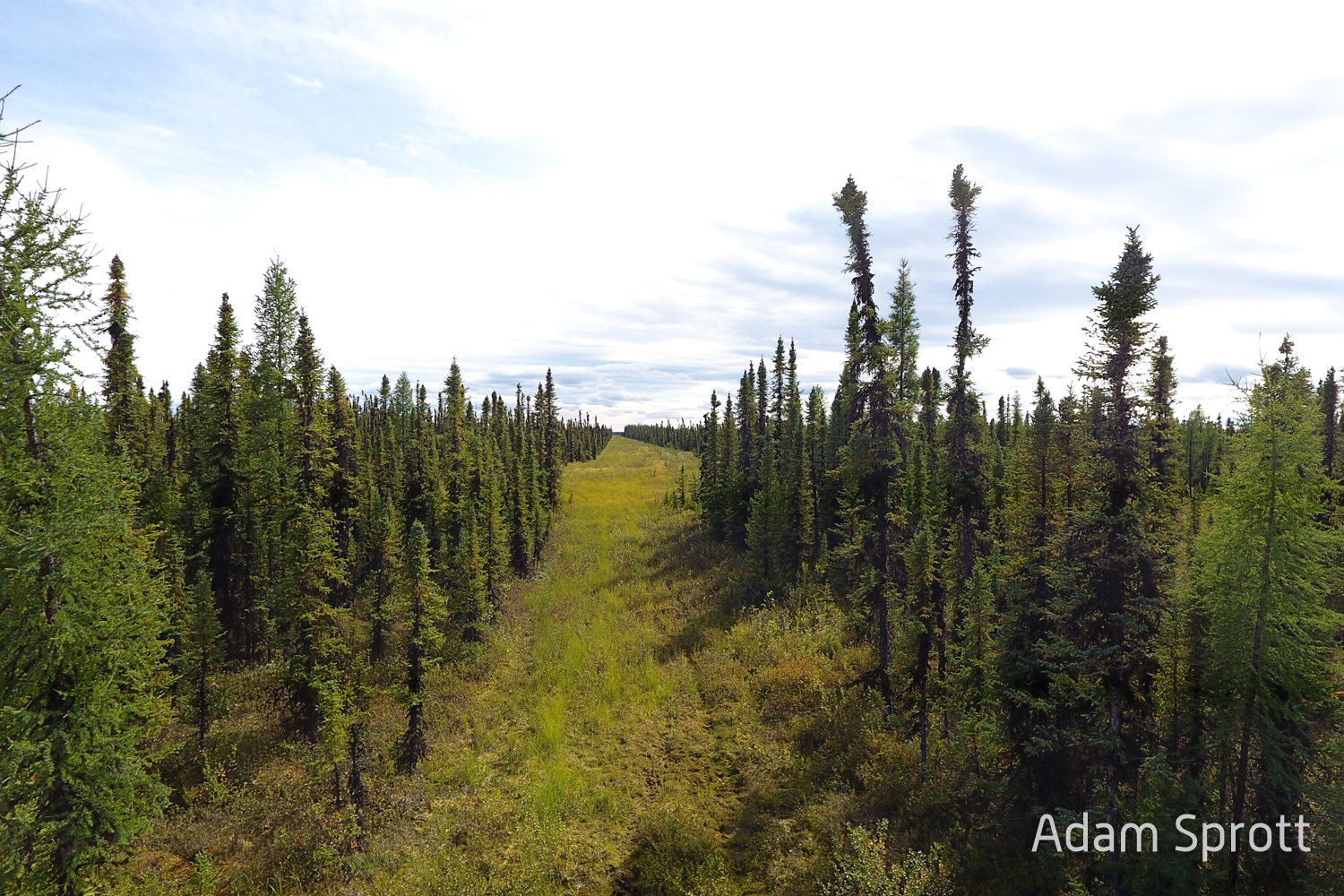Citation
Hornseth, M.L., Pigeon, K.E., MacNearney, D. et al. “Motorized Activity on Legacy Seismic Lines: A Predictive Modeling Approach to Prioritize Restoration Efforts.” Environmental Management. (2018). https://doi.org/10.1007/s00267-018-1063-0
Abstract
Natural regeneration of seismic lines, cleared for hydrocarbon exploration, is slow and often hindered by vegetation damage, soil compaction, and motorized human activity. There is an extensive network of seismic lines in western Canada which is known to impact forest ecosystems, and seismic lines have been linked to declines in woodland caribou (Rangifer tarandus caribou). Seismic line restoration is costly, but necessary for caribou conservation to reduce cumulative disturbance. Understanding where motorized activity may be impeding regeneration of seismic lines will aid in prioritizing restoration. Our study area in west-central Alberta, encompassed five caribou ranges where restoration is required under federal species at risk recovery strategies, hence prioritizing seismic lines for restoration is of immediate conservation value. To understand patterns of motorized activity on seismic lines, we evaluated five a priori hypotheses using a predictive modeling framework and Geographic Information System variables across three landscapes in the foothills and northern boreal regions of Alberta. In the northern boreal landscape, motorized activity was most common in dry areas with a large industrial footprint. In highly disturbed areas of the foothills, motorized activity on seismic lines increased with low vegetation heights, relatively dry soils, and further from forest cutblocks, while in less disturbed areas of the foothills, motorized activity on seismic lines decreased proportional to seismic line density, slope steepness, and white-tailed deer abundance, and increased proportional with distance to roads. We generated predictive maps of high motorized activity, identifying 21,777 km of seismic lines where active restoration could expedite forest regeneration.
Read the paper here.







